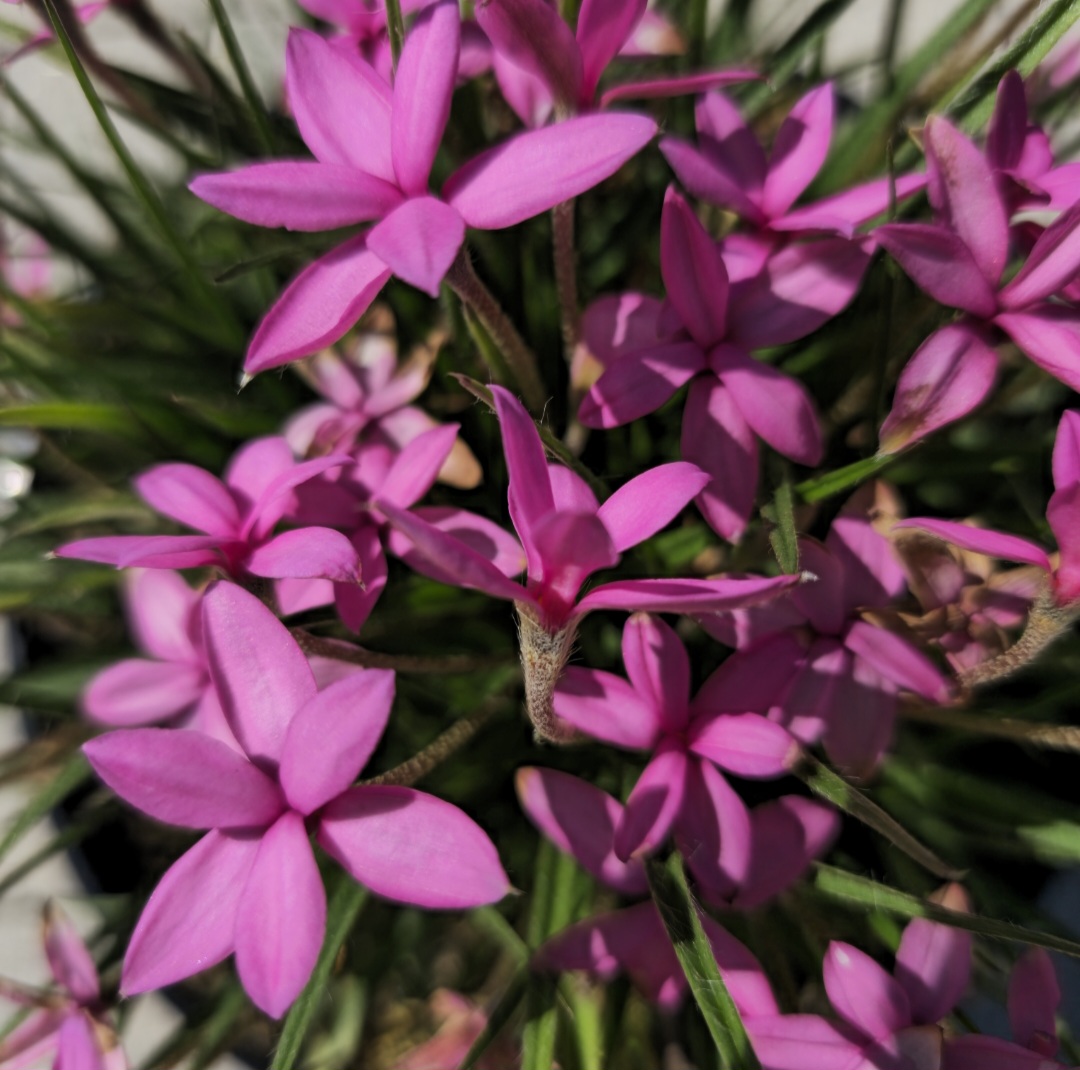Rhodohypoxis ‘Mars’
€12.50
Frequently Bought Together


Description
Rhodohypoxis ‘Mars’ (Rose Grass, Red Star Flower)
Quick Facts
- Common Name: Rose Grass Mars, Red Star Flower
- Botanical Name: Rhodohypoxis ‘Mars’
- Plant Type: Bulbous perennial
- Mature Height: 8-12cm
- Mature Spread: 10-15cm
- Flowering Period: May to September
- Flower Colour: Deep red with paler centres
- Foliage: Narrow, grass-like, hairy leaves
- Hardiness: Hardy with protection (RHS H4)
- Soil Requirements: Well-drained, acidic to neutral soil
- Aspect: Full sun to partial shade
- Maintenance: Low maintenance
Description
The Rhodohypoxis ‘Mars’ is a striking alpine perennial that delivers intense colour to Irish rock gardens, container displays, and specialist plant collections. This captivating drought-tolerant plant produces bold deep red flowers with rich, centres, making it perfect for gardeners seeking vibrant, easy-care alpine plants with exceptional flower power.
This fiery little gem commands attention despite its petite proportions, creating spectacular displays that span the entire growing season. Brilliant red star-shaped blooms emerge continuously from neat tufts of slender, grass-like foliage, forming compact clumps that pack dramatic visual punch. The intense colouration of each 2cm flower creates stunning impact, and when grouped together, they form blazing carpets of colour that energise any garden space.
Named after the red planet, this winter hardy alpine plant thrives in well-drained conditions and brings exotic drama to cooler climates with outstanding reliability. Its naturally compact, clumping growth makes it a showstopper in rockeries, alpine collections, raised beds, or as bold accent edging. The plant’s gradual spreading habit creates expanding pools of fiery colour that return more spectacular each season, flourishing in Irish climate conditions.
The Rhodohypoxis ‘Mars’ creates dynamic contrasts with silver-leaved alpine companions, white-flowered varieties, and fine-textured grasses, offering exciting possibilities for dramatic garden compositions suitable for Irish gardens. Its intense red blooms provide the perfect focal point in specialised alpine schemes.
Caragh Garden Notebook
Plant spacing them 5-8cm apart and 3-4cm deep in well-prepared, gritty soil. Excellent drainage is absolutely essential – we recommend adding plenty of sharp sand or fine gravel to heavy soils. For container growing, use a 50:50 mix of quality compost and horticultural grit. These plants cannot tolerate waterlogged conditions, especially during winter months. Create raised planting areas or mounded beds if your soil retains moisture. A neutral to slightly acidic pH (6.0-7.0) works best, so avoid chalky soils or incorporate ericaceous compost if necessary. Allow the foliage to die back naturally in autumn – this process feeds the underground rhizomes for the following year’s flowering display. Apply a light grit mulch around plants to protect from winter wet. Clear away dead foliage in early spring before new growth emerges.
Divide established clumps every 3-4 years in early spring, carefully separating the small rhizomes. Ensure each division has viable growing points attached. This is also the perfect time to refresh the growing medium with fresh gritty compost.





